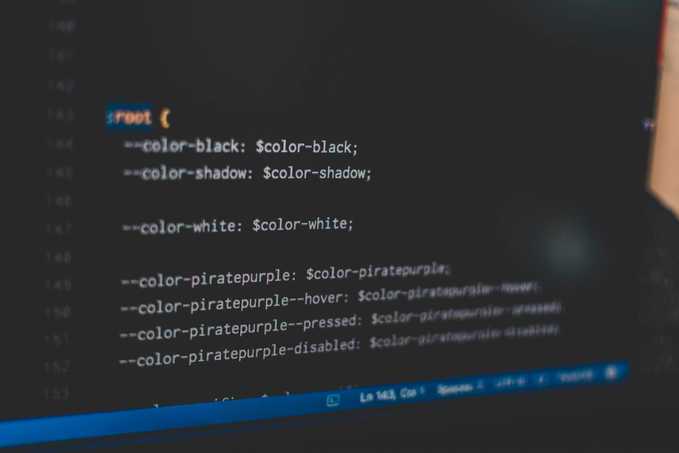Introduction
Node.js has revolutionized the software development world with its unique approach to asynchronous programming. Operating on a non-blocking event model, Node.js enables developers to build highly scalable and efficient applications. At the heart of this asynchronous model lies a lesser-known but critical feature: process.nextTick.
Often overlooked by newcomers to Node.js, this function is a powerful tool for managing asynchronous operations. But what makes it so special, and how does it differ from other asynchronous functions like setTimeout or setImmediate? In this article, we'll explore the fundamentals of process.nextTick, providing essential context that will help you understand its importance in Node.js development.
Node.js and Its Asynchronous Model
Node.js, based on Google's V8 JavaScript engine, is known for its non-blocking, event-driven nature. This model means that operations, especially I/O (input/output), are executed asynchronously, allowing the system to perform other tasks while waiting for these operations to complete. This approach significantly improves performance and scalability, especially in network applications and environments where efficient management of multiple simultaneous tasks is critical.
process.nextTick is an intrinsic function of Node.js that plays a fundamental role in its asynchronous architecture: nextTick allows developers to place a function or callback at the start of the next phase of the event loop, right after completing the current operation. At first glance, it might seem similar to setTimeout or setImmediate, but there are key differences in how process.nextTick is handled within the Node.js event loop. These differences are essential for understanding when and how to effectively use process.nextTick.
Let's break down these concepts further, exploring in detail how process.nextTick works, why it was created, and how its proper use can significantly improve the performance and efficiency of your Node.js applications.
What is process.nextTick?
The main motivation behind process.nextTick was the need for quick and efficient management of callbacks. In Node.js applications, multiple asynchronous operations are often performed, and the way these operations are organized and executed can have a significant impact on the application's performance and scalability.
Node.js uses an event loop to handle asynchronous operations. However, there are situations where it is necessary to ensure that certain callbacks are executed as soon as possible, before the event loop continues with other pending tasks. This is where process.nextTick plays a crucial role.
process.nextTick is an essential function within the Node.js ecosystem, designed to manage asynchronous operations in a particularly efficient manner. Although its use might seem similar to methods like setTimeout or setImmediate, process.nextTick has unique features that distinguish it in the asynchronous programming model of Node.js.
In essence, process.nextTick allows developers to postpone the execution of a function until after the current operation in the event loop is complete, but before any other asynchronous operation takes place. That is, the callbacks passed to process.nextTick are executed immediately after the event loop processes the current phase and before moving on to the next phase.
Although setTimeout and setImmediate are also used to schedule the execution of callbacks in the future, they function slightly differently:
setTimeout(callback, 0)schedules the callback to execute in the next iteration of the event loop, after a minimal delay (which in practice is never exactly 0 ms due to scheduling and execution overhead).setImmediate(callback)is designed to execute a callback at the end of the current event loop phase.- In contrast,
process.nextTickinserts the callback at the start of the queue for the next phase of the event loop, ensuring it is executed as soon as possible, even before operations scheduled withsetImmediateorsetTimeout.
The main advantage of process.nextTick is its ability to allow the program to complete pending operations without yielding control to the event loop. This means that urgent or critical operations can be handled more quickly, which is particularly useful in scenarios where consistency and execution order are important.
In summary, the key feature of process.nextTick is that it has the highest priority in the event loop. Callbacks queued with process.nextTick are executed before any other type of asynchronous callback, including setImmediate and timers. This priority ensures that certain operations can be completed quickly before other asynchronous tasks have the opportunity to execute.
However, due to its nature, misuse of process.nextTick can lead to performance issues. If too many callbacks are scheduled with process.nextTick, they can monopolize the event loop, delaying the execution of other scheduled callbacks, such as I/O operations, timers, or setImmediate. Therefore, it is crucial to understand and use process.nextTick responsibly and efficiently.
Example of Using process.nextTick
console.log('Start of the script');
process.nextTick(() => {
console.log('Executed with process.nextTick');
});
console.log('End of the script');
In this example, the output will be:
- Start of the script
- End of the script
- Executed with process.nextTick
Although the call to process.nextTick is made before console.log('End of the script'), its callback is executed afterward. This is because process.nextTick postpones the execution of the callback until the current operation of the event loop (the execution of the main script) is complete, but before any other asynchronous operation.
When to Use nextTick and When Not To?
Proper Use of process.nextTick
-
Handling Recursive Callbacks
In situations where a function must call itself recursively, but without creating an infinite loop,process.nextTickis useful. It allows the function to execute recursively without overflowing the call stack. -
Ensuring Consistency in Operation Execution
process.nextTickis used to ensure an asynchronous operation is completed before other asynchronous operations begin. For example, it can guarantee that an event is emitted or a callback is executed after an operation is completed, but before other events or callbacks are processed. -
Decoupling Code Execution
To avoid blocking the event loop with intensive operations,process.nextTickcan decouple the execution of a block of code, allowing the event loop to continue with other tasks before executing the callback. -
Efficiency in Callback Management
process.nextTickallows for more efficient management of callbacks, ensuring that critical operations are handled quickly. -
Performance Improvement
By allowing operations to complete before processing additional events and callbacks,process.nextTickcan enhance the overall performance of a Node.js application. -
Flexibility in Control Flow
process.nextTickoffers greater flexibility in managing control flow, allowing developers to precisely define when certain pieces of code should be executed.
Precautions and Misuse of process.nextTick
Despite its advantages, process.nextTick should be used with caution, as improper use can lead to issues in the application.
-
Avoiding Blocking the Event Loop
Excessive use ofprocess.nextTickcan accumulate a large number of callbacks that are executed before any other asynchronous operation takes place, potentially blocking the event loop. -
Properly Handling Errors
It is crucial to handle errors properly withinprocess.nextTickcallbacks to prevent uncaught exceptions from halting the application's execution. -
Excessive Use for Non-Critical Operations
Usingprocess.nextTickfor operations that do not require immediate execution can lead to inefficiencies and delays in the execution of other asynchronous operations. -
Confusing with
setImmediateorsetTimeout
A common mistake is to useprocess.nextTickas a direct replacement forsetImmediateorsetTimeout, without considering the differences in their behavior and effect on the event loop.
Performance Considerations
It's important to note that excessive use of process.nextTick can lead to situations where the event loop is saturated with process.nextTick callbacks, potentially delaying the execution of other asynchronous operations. Therefore, it is crucial to use process.nextTick responsibly, especially in applications with a high volume of asynchronous operations.
Conclusion
process.nextTick is a powerful tool in Node.js, but like any powerful tool, it must be used with knowledge and caution. Understanding its ideal use cases and the risks associated with its misuse is essential for any developer working with Node.js.





